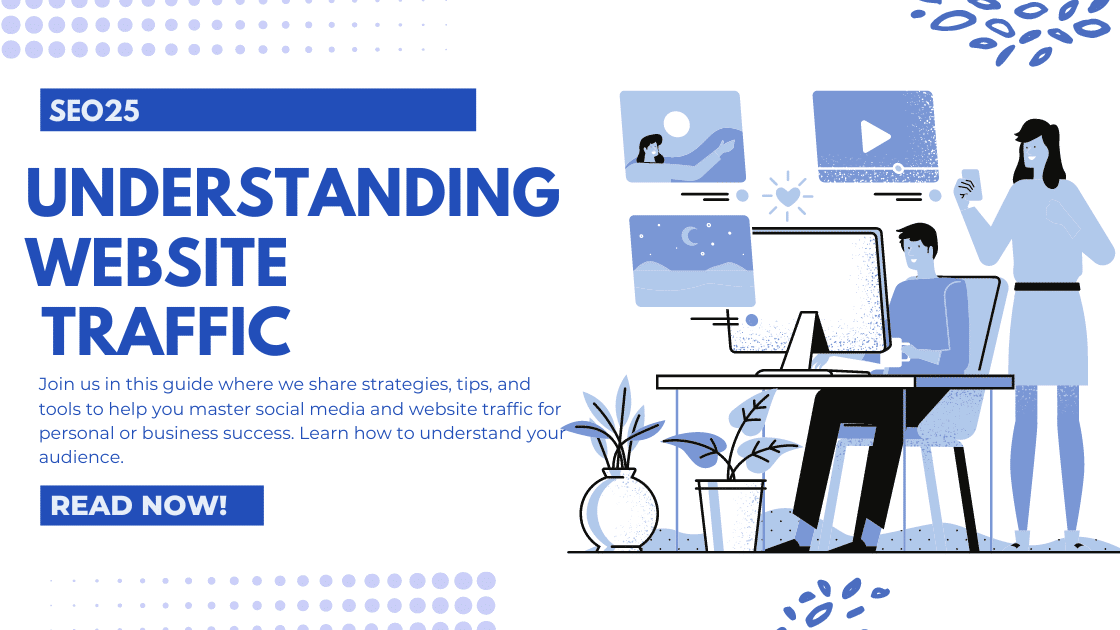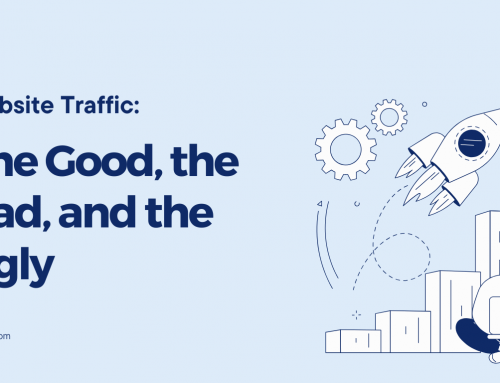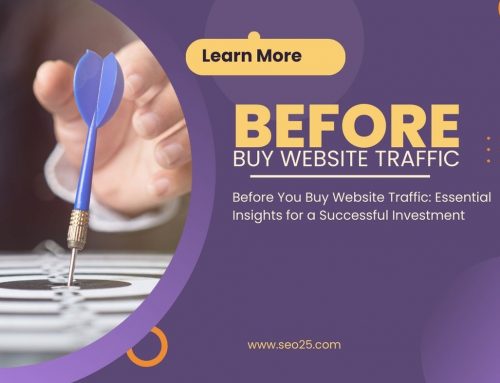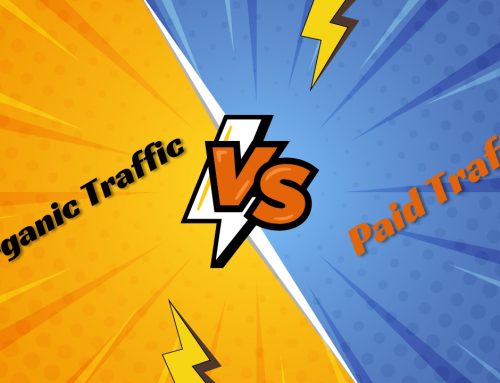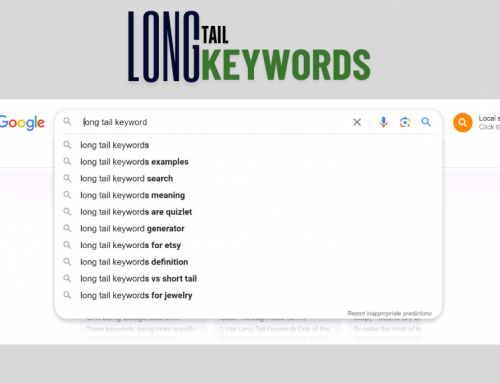As a business owner, understanding the dynamics of website traffic is crucial for driving growth and success. In this comprehensive guide, we’ll dive deep into the world of organic and paid traffic, exploring the advantages, strategies, and the ultimate question – which one is better for your business?
Introduction to Website Traffic
Understanding Website Traffic is the lifeblood of any online business. It represents the number of visitors who come to your website, and it’s a critical metric for measuring the success and reach of your digital presence. Knowing the sources and composition of your website traffic can help you make informed decisions about your marketing and content strategies.
Understanding Website Traffic
Organic traffic refers to the visitors who find your website through search engines, such as Google, Bing, or Yahoo. These users are typically searching for specific information or products and are directed to your site based on the relevance and quality of your content. Organic traffic is often considered the “holy grail” of website traffic, as it’s free and can lead to long-term, sustainable growth.
Advantages of Organic Traffic
- Cost-Effective: Organic traffic is free, as you don’t have to pay for each visitor that finds your website through search engines.
- Credibility: Ranking highly in search results can establish your brand as an authority in your industry, which can lead to increased trust and loyalty from your audience.
- Long-Term Sustainability: Organic traffic can continue to drive visitors to your website for years, as your content and search engine optimization (SEO) efforts continue to pay dividends.
How to Increase Organic Traffic
Boost Organic Traffic with Long-Tail Keywords: Attract the Right Visitors
Long-tail keywords are your secret weapon for boosting organic traffic and improving search engine rankings. By targeting specific, longer search phrases, you can attract highly qualified visitors who are more likely to convert.
Understanding Long-Tail Keywords
Unlike short, generic keywords with high competition, long-tail keywords are more specific and often have lower search volume. However, they offer significant advantages:
- Lower competition: Easier to rank for long-tail keywords.
- Higher conversion rates: Users searching with long-tail keywords are often closer to making a purchase.
- Improved user experience: Tailored content based on long-tail keywords enhances user satisfaction.
How to Find Effective Long-Tail Keywords
- Keyword research tools: Utilize platforms like Google Keyword Planner, SEMrush, or Ahrefs to identify relevant long-tail keywords.
- Competitor analysis: Analyze your competitors’ keyword strategies to discover untapped opportunities.
- Customer insights: Understand your target audience’s language and search behavior.
Incorporating Long-Tail Keywords into Your Content
- Keyword mapping: Assign relevant long-tail keywords to specific pages or blog posts.
- Content optimization: Naturally incorporate long-tail keywords into your content without keyword stuffing.
- On-page SEO: Optimize title tags, meta descriptions, and header tags with long-tail keywords.
Measuring Success
- Track keyword rankings: Monitor your progress using SEO tools.
- Analyze website traffic: Identify which long-tail keywords are driving the most conversions.
- Refine your strategy: Continuously optimize your keyword strategy based on performance data.
- Optimize Your Website for Search Engines: Ensure your website is well-structured, with relevant and valuable content, meta tags, and other on-page SEO elements.
- Create High-Quality, Informative Content: Develop content that addresses your target audience’s pain points and provides them with useful information.
- Leverage Keyword Research: Identify the keywords and phrases your potential customers are searching for, and incorporate them into your content and website structure.
- Build Backlinks: Earn high-quality backlinks from reputable websites to improve your website’s authority and search engine rankings.
YP (Yellow Pages) Listings: Drive Organic Traffic and Boost Rankings
YP (Yellow Pages) can drive organic traffic and boost your search engine ranking. By listing your business on YP, you increase your online presence, making it easier for potential customers to find you. Enhanced visibility on a trusted platform like YP can lead to more clicks and visits to your website, which in turn signals to search engines that your site is relevant and valuable. Over time, this can improve your SEO rankings, bringing in even more organic traffic.
Understanding Paid Traffic
Paid traffic, a key aspect of understanding website traffic, refers to visitors who arrive at your website through various advertising channels, such as search engine ads (e.g., Google Ads), social media ads, or display advertising. Unlike organic traffic, paid traffic requires an investment, but it can offer more immediate and targeted results.
Advantages of Paid Traffic
- Targeted Reach: Paid advertising allows you to precisely target your ideal audience based on factors like demographics, interests, and search behavior.
- Faster Results: Paid traffic can generate immediate results, as your ads can start driving visitors to your website as soon as they’re launched.
- Measurable Performance: Paid advertising platforms provide detailed analytics and reporting, allowing you to track the performance of your campaigns and make data-driven decisions.
How to Drive Targeted Traffic with Paid Methods
- Develop a Comprehensive Paid Advertising Strategy: Identify the most effective paid channels for your business, such as search engine ads, social media ads, or display advertising.
- Conduct Thorough Keyword and Audience Research: Understand the search terms and demographics of your target audience to create highly relevant and effective ad campaigns.
- Optimize Your Ad Campaigns: Continuously monitor and refine your paid advertising campaigns to improve their performance and maximize your return on investment (ROI).
Organic vs. Paid Traffic: Which is Better for Your Business?
The answer to this question depends on your business goals, budget, and target audience. Both organic and paid traffic have their own unique advantages and disadvantages, and the best approach is often a combination of the two.
Organic traffic is generally more cost-effective and can lead to long-term, sustainable growth, but it can take time to build up. Paid traffic, on the other hand, can provide faster results and more targeted reach, but it requires a consistent investment.
| Organic Traffic | Paid Traffic |
| – Cost-effective – Credibility and authority – Long-term sustainability |
– Targeted reach – Faster results – Measurable performance |
Combining Organic and Paid Traffic Strategies
For most businesses, the optimal approach is to combine organic and paid traffic strategies. By leveraging the strengths of both, you can create a comprehensive and effective website traffic plan that drives growth and success.
- Align Your Organic and Paid Strategies: Ensure that your organic and paid efforts are working in harmony, with consistent messaging, targeting, and branding.
- Utilize Paid Ads to Complement Organic Efforts: Use paid advertising to boost the visibility of your high-performing organic web traffic (Visitors) can drive more targeted traffic to your website.
- Analyze and Optimize: Continuously monitor the performance of your organic and paid traffic, and make adjustments to your strategies based on the data and insights you gather.
Ready to take your website traffic to the next level? Contact us today to learn more about our comprehensive digital marketing solutions that combine organic and paid strategies for maximum impact.
Conclusion: Maximize Your Website Traffic with These Proven Methods
In conclusion, understanding the intricacies of organic and paid traffic is crucial for the success of your online business. By leveraging the unique advantages of each approach and combining them into a cohesive strategy, you can maximize your website traffic, drive more qualified leads, and ultimately, achieve your business goals.
Remember, the key to effective website traffic management lies in continuously analyzing, testing, and refining your strategies. Stay adaptable, data-driven, and focused on providing value to your audience, and you’ll be well on your way to dominating the digital landscape.
For an immediate boost, consider investing in services to buy organic web traffic tailored to your needs. This can help increase visibility and accelerate your path to success.

